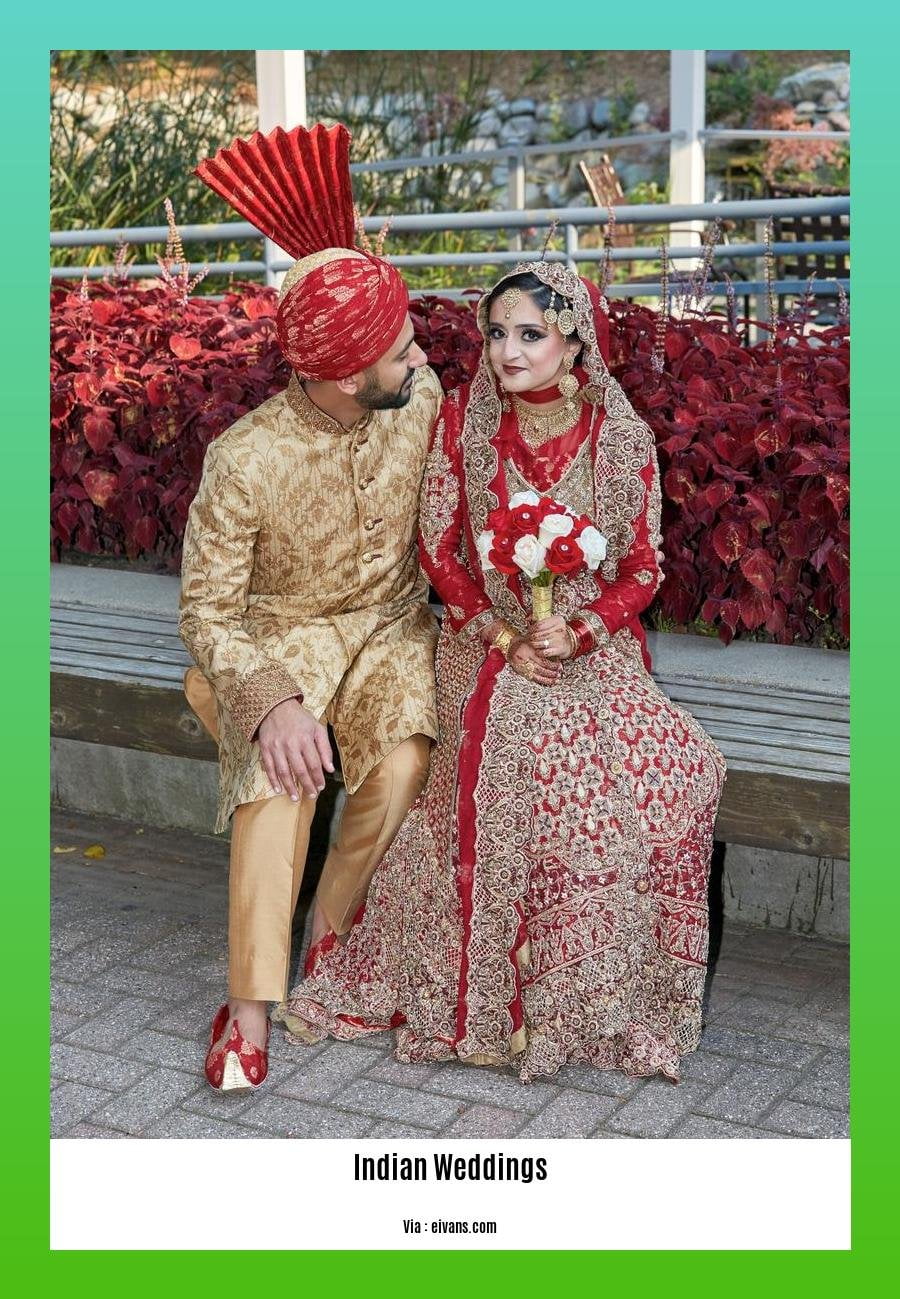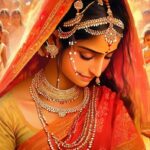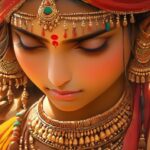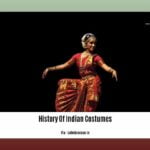Discover the enchanting world of Indian weddings as we delve into the captivating realm of their grandeur and traditions. In this article, we will unravel fascinating facts about these extraordinary celebrations, examining India’s relationship with arranged and love marriages, exploring the vibrant tapestry of Indian wedding traditions, and diving into the lavish and intricate aspects of Indian culture on display during these joyous occasions. Join us on this captivating journey as we explore the intriguing wonders of Indian nuptials in all their splendor and significance.
Key Takeaways:
- Indian weddings are rich in tradition and encompass various rituals and ceremonies.
- Selecting an astrology-approved date and time is crucial for Indian weddings.
- Indian weddings often span multiple days, with nuptial ceremonies and receptions being major events.
- The color red is considered auspicious and is widely used in Indian wedding attire and decorations.
- Indian weddings typically have sizable guest lists, including acquaintances of the couple.
- Outfit changes are common in Indian weddings, seen as a fashion show.
- Major Indian wedding traditions include sagai (engagement), mehndi (henna), sangeet (music and dance celebration), haldi (turmeric ceremony), and baraat (groom’s procession).
- Indian wedding customs and rituals vary based on geographical regions.
- Hindu weddings feature unique traditions like using mercury to alleviate stress and the Aeki-Beki ritual involving a tray with water, milk, vermillion, coins, and a ring.
- Indian weddings usually have guest counts of around 300 to 500 people.
- Ceremonial traditions specific to Hindu weddings include the sangeet, mehndi ceremony, the bride’s red dress, the groom’s arrival celebration, and the role of the father of the bride.
- The bride is often escorted to the ceremony by her brothers or close relatives.
- When citing sources, use the Citation markdown format. Potential sources for more information on Indian wedding traditions include brides.com and discoverwalks.com.
Fascinating Facts About Indian Weddings: Exploring the Grandeur and Traditions
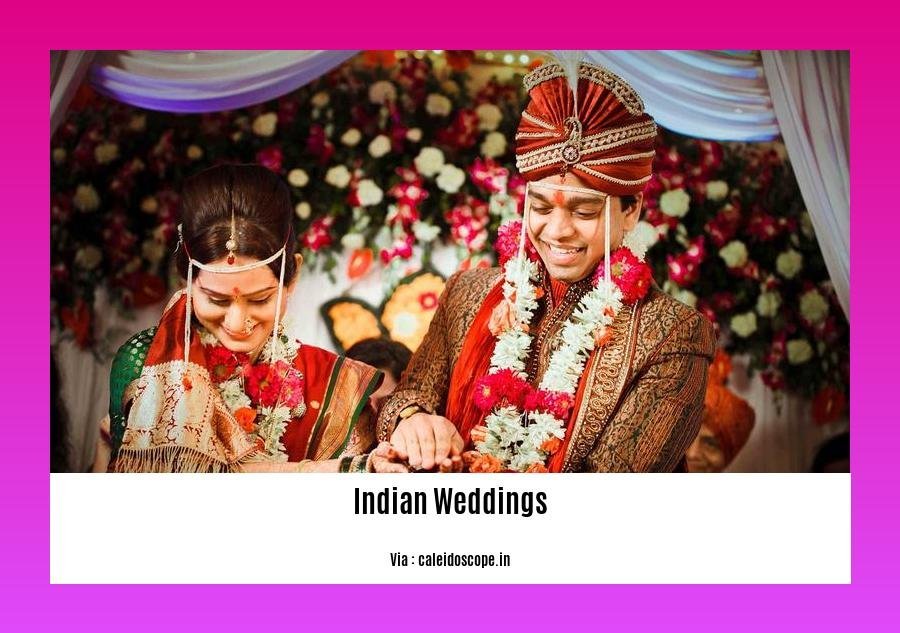
Indian weddings are a remarkable blend of rich traditions, lavish celebrations, and deep symbolism. From the selection of an auspicious date and time to the vibrant rituals and ceremonies, these weddings are truly a sight to behold. Let’s delve into some fascinating facts about Indian weddings and uncover the beauty that lies within.
Astrological Significance and Lengthy Celebrations
One intriguing aspect of Indian weddings is the importance placed on selecting an astrology-approved date and time for the ceremony. This belief stems from the belief that specific celestial alignments can bless the marriage with good fortune and prosperity.
Indian weddings also stand apart due to their multi-day nature. These celebrations can extend over several days, with each day dedicated to various events. From the grand nuptial ceremony to the extravagant reception, these weddings are a true testament to the grandeur and magnificence of Indian culture.
The Significance of Red
When attending an Indian wedding, it is impossible to ignore the prominence of the color red. In Indian culture, red is considered extremely auspicious and is believed to bring good luck and prosperity to the married couple. It symbolizes love, passion, and strength. Traditional Indian wedding attire often features intricate red designs, and decorations are adorned with vibrant red hues, making the whole celebration come alive with vibrant energy.
Guest List and Attire Changes
Indian weddings are known for their extensive guest lists, which often include people the couple may have only interacted with once in their lifetime. This reflects the spirit of togetherness and community that Indian weddings embody.
Another remarkable aspect is the multiple outfit changes that take place during these weddings. It’s almost like a fashion show, where the bride, groom, and even the guests change attire between different events. This vibrant display of colors and designs adds to the splendor and visual spectacle of Indian weddings.
Enchanting Rituals and Ceremonies
Indian weddings are filled with captivating traditions and elaborate ceremonies. Some of these include:
-
Sagai (Engagement): The official exchange of rings between the bride and groom, marking the commitment and formal announcement of their impending marriage.
-
Mehndi (Henna): The application of intricate henna designs on the bride’s hands and feet, symbolizing beauty, joy, and transition. Mehndi ceremonies are often accompanied by joyful music and dance.
-
Sangeet (Music and Dance Celebration): The night of musical and dance performances by family and friends, expressing their love and excitement for the couple. It’s a joyous occasion filled with laughter and celebration.
-
Haldi (Turmeric Ceremony): A ritual where the bride and groom are smeared with an herbal paste made of turmeric, sandalwood, and other ingredients. This practice is believed to bring out their inner glow, purify them, and ward off evil spirits.
-
Baraat (Groom’s Procession): The groom, accompanied by his family and friends, arrives at the wedding venue with great fanfare. The procession is often led by a lively band or dancers, creating a festive and joyous atmosphere.
Cultural Variations and Customs
It’s important to note that Indian weddings showcase a vast range of customs and traditions, varying from region to region. Each state and community within India has its own unique set of rituals and ceremonies, adding to the diversity and richness of Indian weddings.
Interesting Hindu Wedding Facts
Here are a few intriguing Hindu wedding facts that add to the mystique of Indian weddings:
- The use of mercury to remove stress and negative energies is considered a part of some Hindu wedding rituals.
- The ritual of “Aeki-Beki” involves a tray filled with water, milk, vermillion, coins, and a ring. The bride and groom compete to find the ring while blindfolded. It symbolizes their ability to find each other amidst life’s challenges.
- Hindu weddings often have a guest count of around 300 to 500 people, showcasing the importance of family and community.
- Ceremonial traditions specific to Hindu weddings include the sangeet (musical gathering), mehndi ceremony (henna adornment), the bride’s red dress, the groom’s arrival celebration, and the significant role of the father of the bride.
- It is common for the bride to be led to the ceremony by her brothers or close relatives, symbolizing their protection, support, and trust.
Conclusion
Indian weddings are a mesmerizing blend of vibrant traditions, breathtaking attire, and heavenly food. With their deep-rooted customs and awe-inspiring ceremonies, Indian weddings present a cultural tapestry that captivates the hearts of everyone involved. The facts shared here have only scratched the surface of the grandeur and beauty that unfolds during an Indian wedding. Delve deeper, explore further, and embrace the enchantment of these extraordinary celebrations.
Did you know there are fascinating facts about life below water? Dive into the underwater world and discover these incredible facts about life below water. Explore more about the wonders of the ocean here.
Indian Wedding Traditions
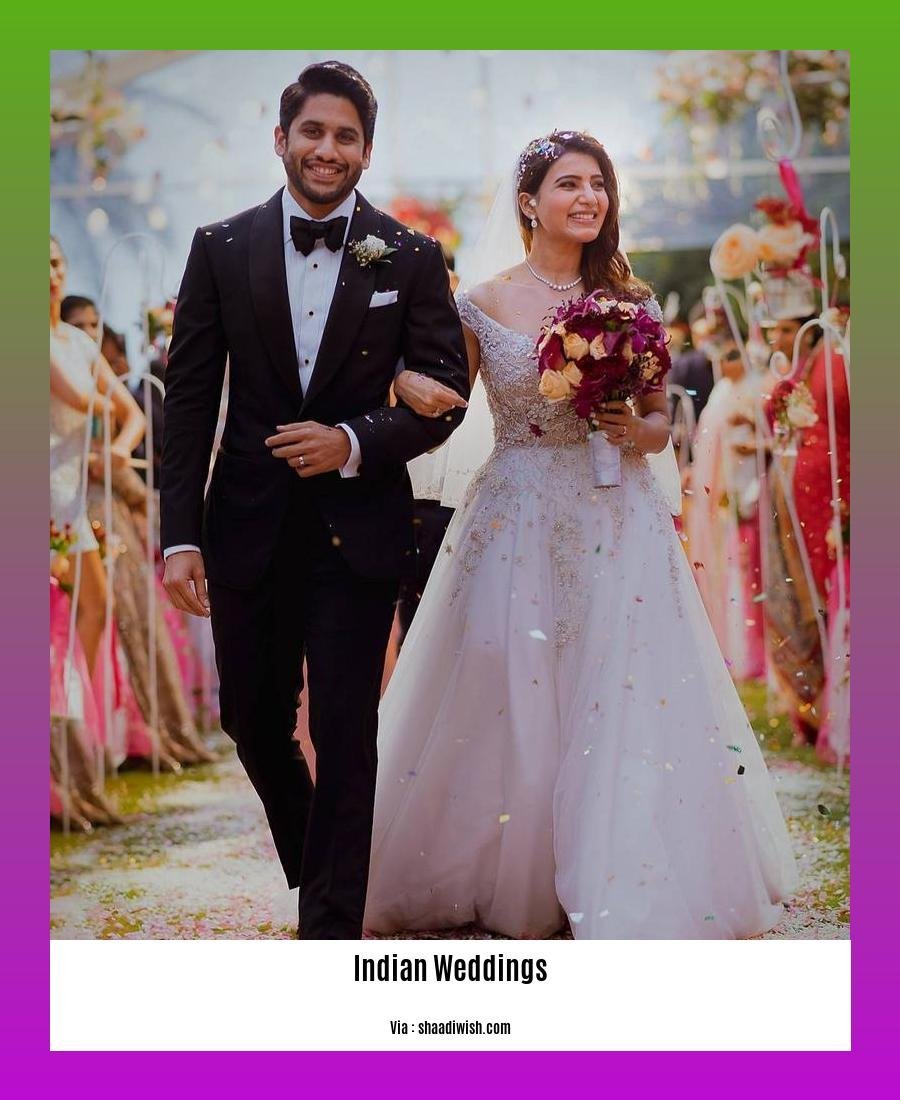
Tamil Brahmin Ritual Enactment: A Unique Tradition
Among Tamil Brahmins, there is a fascinating tradition that involves the groom performing a ritual enactment of asceticism. This distinctive practice showcases the groom’s dedication and commitment to the sacred bond of marriage. During this ritual, the groom temporarily renounces worldly pleasures and adopts the appearance of an ascetic, wearing a simple traditional attire and carrying a walking stick. It is a symbolic representation of his readiness to embrace the responsibilities of married life and his determination to fulfill his role as a devoted husband. This tradition highlights the deep-rooted customs and beliefs that are an integral part of Indian weddings.
Marriage by Abduction: An Ancient Indian Norm
In ancient times, among some Indian tribes, marriage by abduction was a norm. This unusual practice involved a potential groom kidnapping the bride-to-be to forcibly claim her as his wife. While this tradition may seem archaic and unconventional in contemporary society, it offers a glimpse into the historical context and evolution of Indian weddings. It highlights the intricate tapestry of customs that have shaped the diverse landscape of Indian matrimonial rituals.
The Symbolic Tying of the Thali: A Nagarattar Tradition
The Nagarattars of Tamil Nadu, South India, have a unique tradition involving the ceremonial tying of the thali or mangalsutra. The thali is a symbolic necklace worn by married women in India. During the wedding ceremony, the groom ties the thali around the bride’s neck, signifying their union and marital commitment. This ritual holds deep cultural and religious significance and represents the eternal bond between the husband and wife. The intricate details and symbolism behind such traditions add depth and meaning to Indian weddings.
The Purifying Ritual of Mangal Snanam
In most Hindu weddings, the couple partakes in a ritual called “Mangal Snanam” early in the morning at the break of dawn on their wedding day. This ritual is believed to cleanse and purify the couple, preparing them for the sacred and auspicious rites that will follow. It serves as a spiritual cleansing, symbolizing the washing away of any impurities or negative influences. This ritual highlights the importance of spiritual purity and sanctity in Indian weddings, emphasizing the depth of cultural and religious customs.
Key Takeaways:
- Indian weddings encompass a rich tapestry of diverse traditions and customs.
- Tamil Brahmins have a unique ritual enactment of asceticism during weddings.
- Marriage by abduction was a norm among some ancient Indian tribes.
- The Nagarattars of Tamil Nadu have a tradition involving the ceremonial tying of the thali.
- The Mangal Snanam ritual is performed to cleanse and purify the couple before the wedding.
- These traditions showcase the profound symbolism and depth of cultural significance in Indian weddings.
Sources:
– confetti.co.uk: 10 Interesting Facts You Did Not Know About Indian Weddings
– anokhisarees.co.uk: 8 Interesting Facts You Didn’t Know About Indian Weddings
Lavish Indian Culture
Indian weddings are a true reflection of the lavishness that is deeply ingrained in Indian culture. These grand celebrations are a sight to behold, filled with extravagant traditions, elaborate attire, delicious cuisine, and profound symbolism. Let’s dive into some fascinating facts about Indian weddings that highlight the sheer opulence and cultural richness that are integral to these joyous occasions.
The Grandeur of Indian Weddings
Indian weddings are a multi-day affair, spanning several ceremonies, dances, and rituals. From the engagement ceremony (Sagai) and the pre-wedding henna ceremony (Mehndi) to the fun-filled music and dance celebration (Sangeet), every event exudes opulence and grandeur. These celebrations serve as platforms for families to express their love and joy, unifying them in an atmosphere of celebration.
The Richness of Indian Traditions
Indian weddings are steeped in rich cultural traditions that have been passed down through generations. One notable tradition is the use of the auspicious color red, which is prominently featured in the bridal attire and wedding decorations. This vibrant color represents love, prosperity, and a new beginning.
A Feast for the Senses
In Indian weddings, food takes center stage and is considered a highlight of the celebration. Lavish spreads of delectable cuisine are laid out, showcasing the diversity of Indian culinary traditions. From mouthwatering biryanis and flavorful curries to tantalizing desserts, guests are treated to an indulgent feast that reflects the culinary heritage of India.
The Role of the Youth
Indian weddings provide a platform for young people to mingle and engage in matchmaking. It is common for young individuals to meet and form connections during these grand celebrations. The atmosphere is charged with excitement and anticipation, as young hearts seek love and companionship amidst the festivities.
A Kaleidoscope of Attire
Indian weddings are a showcase of traditional and fashionable attire. From the bridal party to the guests, multiple outfit changes are the norm. Vibrant colors, intricate embroidery, and dazzling embellishments adorn the attire, reflecting the cultural diversity and sartorial splendor of India.
Key Takeaways:
- Indian weddings are a captivating blend of opulence, traditions, and cultural symbolism.
- Multiple-day celebrations filled with rituals, dances, and ceremonies showcase the grandeur of Indian weddings.
- The use of the auspicious color red and elaborate attire add to the lavishness of these joyous occasions.
- Food plays a pivotal role, with lavish spreads of diverse cuisine delighting the senses.
- Indian weddings provide young individuals with the opportunity to mingle and form connections.
- The vibrant tapestry of attire, featuring traditional and fashionable garments, is a visual delight.
Sources:
– Madame Bridal
– Discover Walks
FAQ
Q1: What are some interesting facts about Indian weddings?
A1: Indian weddings are known for their opulent displays of color, music, and dance, as well as elaborate ceremonies and rituals that take place over several days. Food is a vital part of Indian weddings and is considered a highlight of the celebration. Indian weddings consist of multiple rituals for every event, showcasing the rich culture of India. Indian weddings have a large guest list, with extended family members, friends, and acquaintances being invited. Outfit changes are common during Indian weddings, as guests and the bridal party showcase various traditional and fashionable attire.
Q2: What are some key traditions and ceremonies in Indian weddings?
A2: Some key Indian wedding traditions and ceremonies include the sagai (engagement), mehndi (henna), sangeet (music and dance celebration), haldi (turmeric ceremony), and baraat (groom’s procession). The ceremony usually begins with Kanyadaan, a ritual where the bride’s parents give their daughter away to the groom. This is followed by the Mangal Phera ritual, where the couple joins hands and walks around a ceremonial fire. Indian weddings vary based on geography, with different customs and rituals in different regions. Among Tamil Brahmins, grooms perform a ritual enactment of asceticism, and the Nagarattars of Tamil Nadu have a tradition involving the ceremonial tying of the thali or mangalsutra, which is a symbolic necklace.
Q3: How long do Indian weddings typically last?
A3: Indian weddings are often multi-day events, filled with ceremonies, dances, and rituals. They can span anywhere from three to seven days, with each day featuring different events and celebrations. The nuptial ceremony and reception are usually the central focus, taking place on one of the days, while other days may be dedicated to pre-wedding rituals, such as the mehndi ceremony and sangeet.
Q4: What is the significance of the color red in Indian weddings?
A4: Red is considered an auspicious color in Indian weddings and is commonly seen in Indian wedding attire and decorations. It symbolizes love, commitment, and fertility. The bride often wears a red saree or lehenga, and the groom may wear a red turban or sherwani. Red is also used in the decor, such as in the wedding mandap (canopy) and floral arrangements. The color red is believed to bring good luck and blessings to the couple.
Q5: Can you provide some sources for more information on Indian wedding traditions?
A5: Two potential sources for more information on Indian wedding traditions could be brides.com and discoverwalks.com. Brides.com provides articles and resources specifically focused on Indian weddings and traditions ( Discoverwalks.com offers insights into various aspects of Indian culture, including an article on 20 must-know traditions and ceremonies of Indian weddings (
- Unveiling Bernhard Caesar Einstein’s Scientific Achievements: A Legacy in Engineering - July 15, 2025
- Uncover who is Jerry McSorley: CEO, Family Man, Business Success Story - July 15, 2025
- Discover Bernhard Caesar Einstein’s Scientific Contributions: Unveiling a Legacy Beyond Einstein - July 15, 2025
